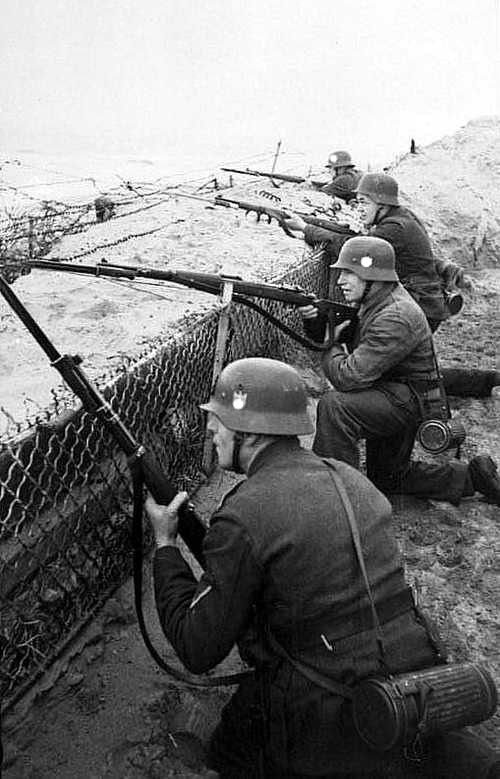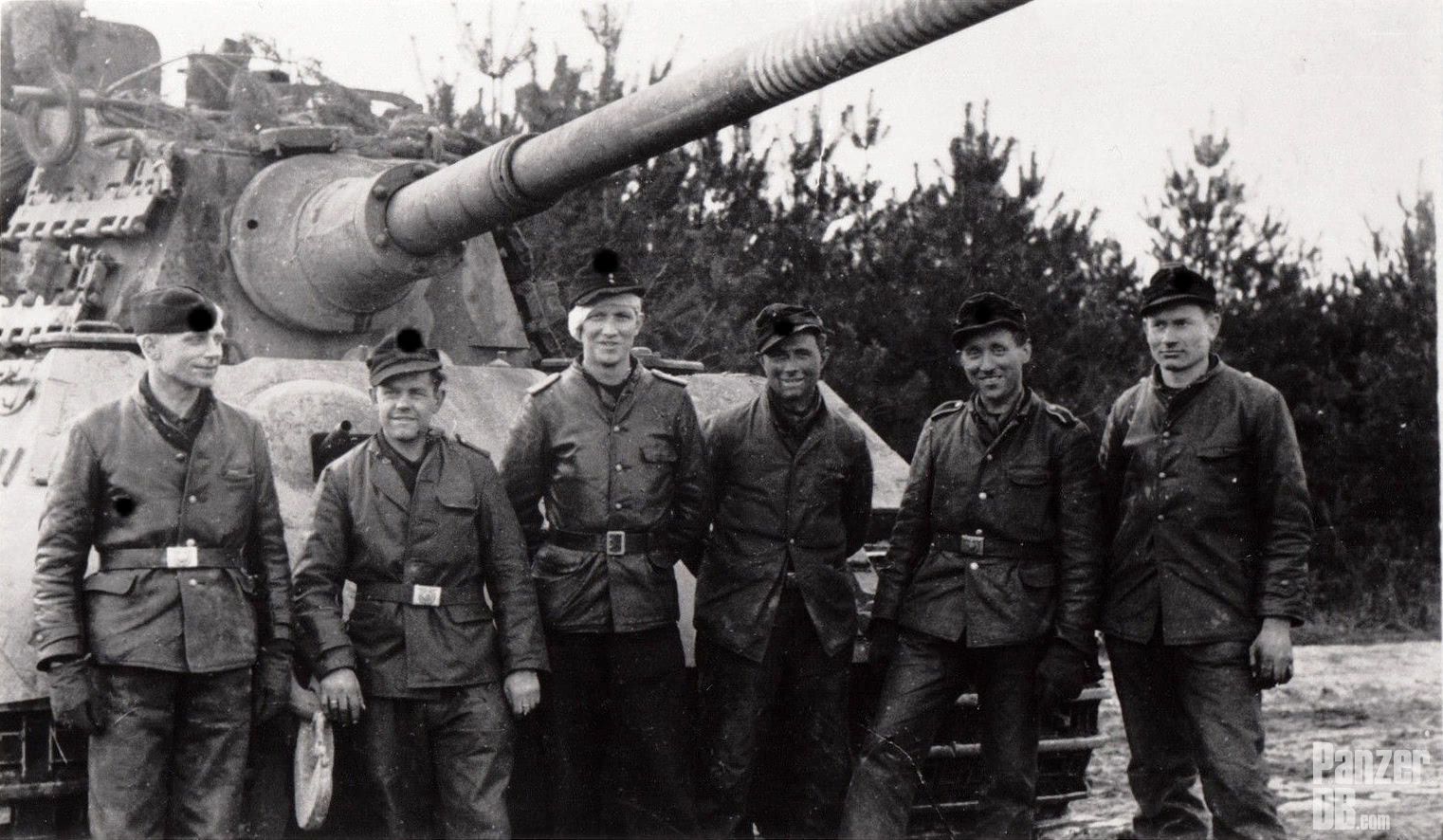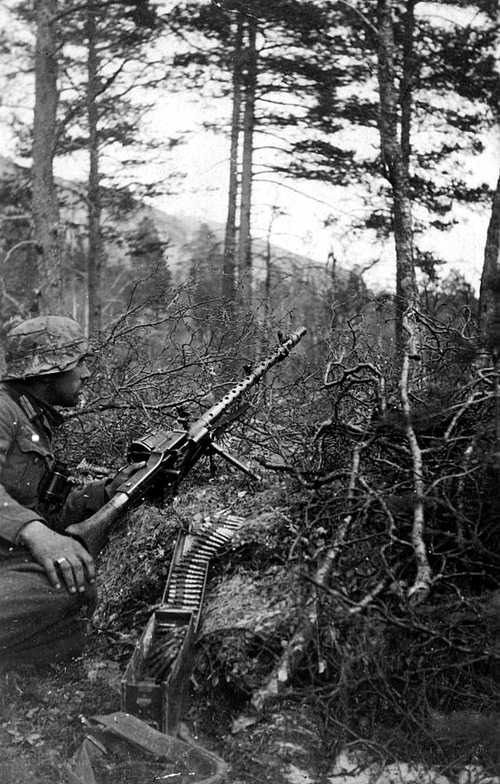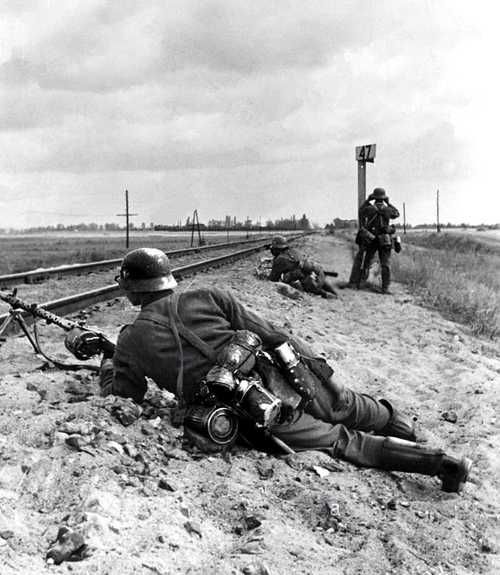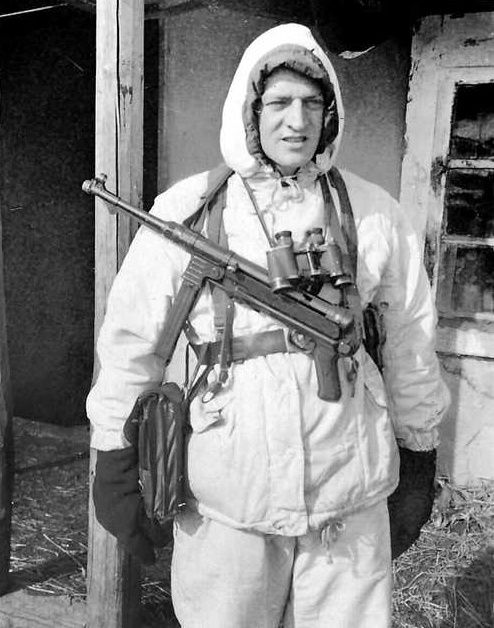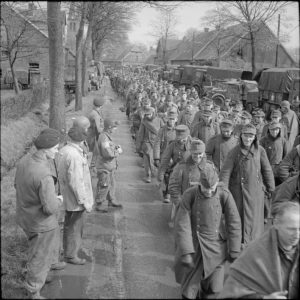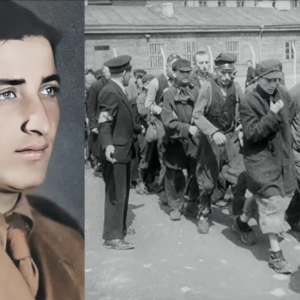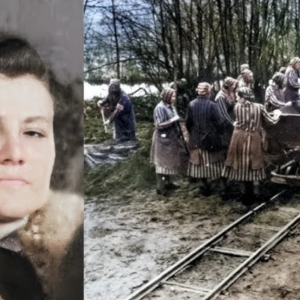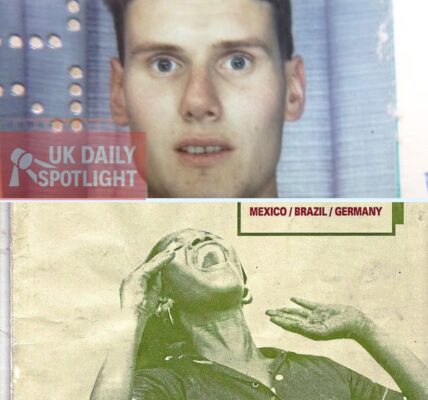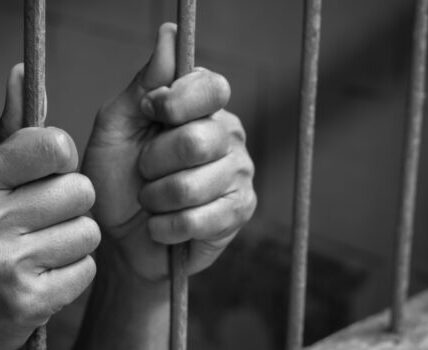
A German soldier on a Zündapp K-800 motorcycle (1940)
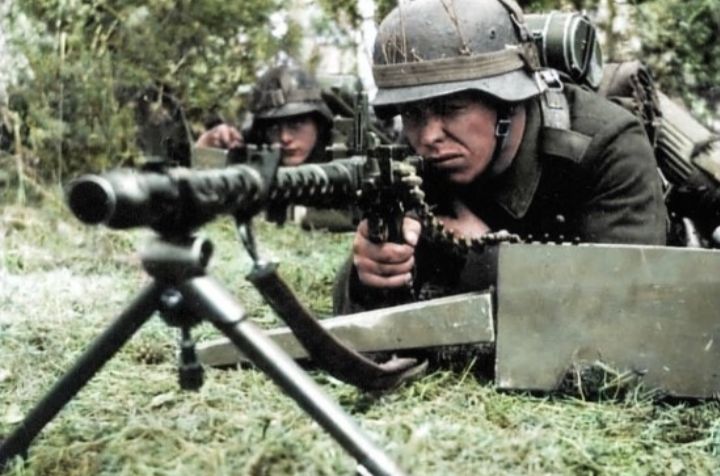
The photo shows German soldiers next to an MG-34 (1944).
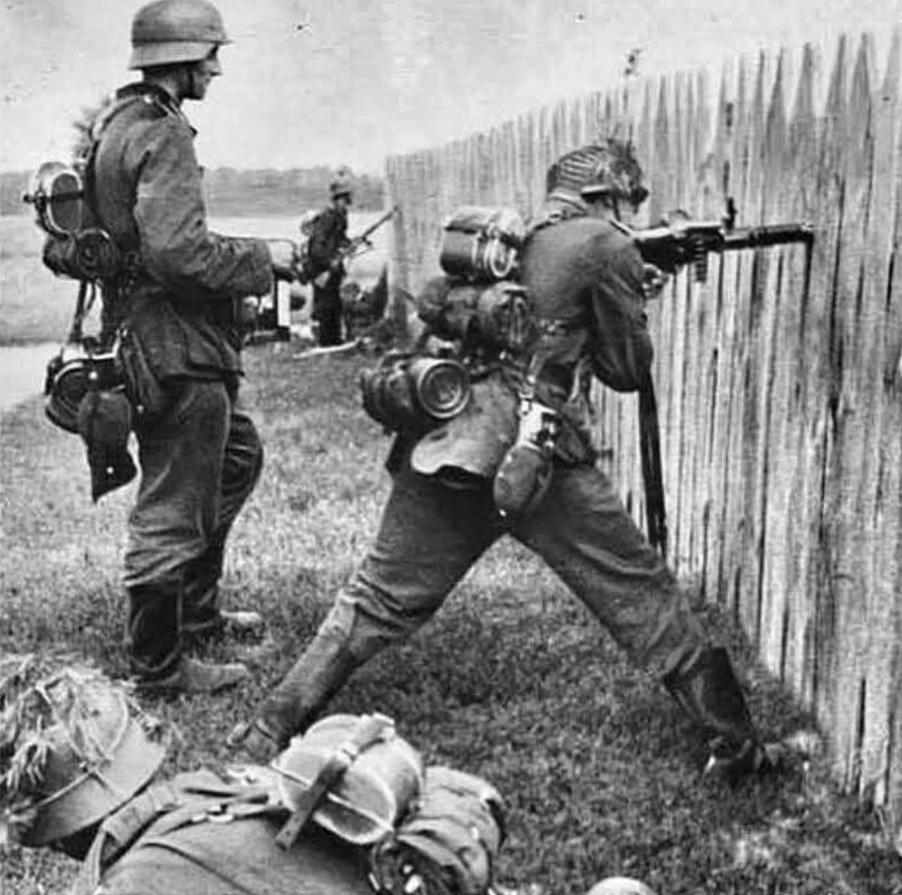
Army infantry use a depression in a wooden fence as a support for their MG42 machine gun. This makes both handling and firing the weapon more efficient. Eastern Front.

In the photo: German soldier Fritz Reidel returns to his wife and three children on May 21, 1945.
According to German statistics, most prisoners of war were released more quickly than the Allied soldiers: Of the 2 million prisoners held by the Soviets, 900,000 were released in 1946, 300,000 in 1947 and 1948, and another 400,000 in 1949. Thus, 45% returned within one year, 60% within two years, and 75% within three years. Only 5% remained prisoners of war until the 1950s.

In the photo: A German soldier digs out a Zündapp KS-600 motorcycle with sidecar that was stuck in the mud (1943).

In the photo: German soldiers next to an MG-34 machine gun during a training exercise.

In the photo: A German soldier reports the number of received wooden hand grenades of model M-24 (1943).

In the photo: Sailors of the Kriegsmarine next to a 20 mm MG FF cannon at an observation post.

In the photo: German soldiers marching to the Eastern Front (1942).
It can be seen that they are armed with the Karabiner 98k.

In the photo: A Panzer III on a test site (May 1937).

In the photo: Air Force soldiers next to an 88mm anti-aircraft gun.
The enormous 88mm projectiles are clearly visible.

In the photo: German soldiers next to a 50mm PaK-38 anti-tank gun.

In the photo: German soldiers, exhausted from the intense fighting on the Eastern Front, await new orders to launch Operation Spring Awakening (1945).
It can be seen that the soldier in the foreground is armed with an MG-42 machine gun.

In the photo: A German soldier next to a 5-cm Granatwerfer 36 on the outskirts of Leningrad (1943).

In the photo: A German soldier in the “Presenting the Rifle” pose (1939).
It can be seen that he is armed with a Karabiner 98k.

In the photo: German soldiers next to a 15-cm Nebelwerfer 41 multiple rocket launcher.
This powerful weapon was primarily used to support infantry and was known for its characteristic howling sound when fired, which often caused panic among opponents.

In the photo: German soldiers with an MG-34 machine gun in firing position.
This reliable weapon was used by both infantry and as onboard armament in vehicles and was considered one of the most advanced machine guns of its time.

In the photo: German soldiers cross a bridge in Polish territory that was bombed by Polish troops to stop the German advance (September 8, 1939).
Such scenes were part of the early phase of World War II, when the Wehrmacht implemented its Blitzkrieg strategy, which relied on speed and surprise, and occupied Poland within a few weeks.

Fallen German soldiers are buried under US supervision by German prisoners of war in Manche, Normandy – July 1944. LIFE Magazine Archives – Photographer: Ralph Morse – WWP-PD

German troops wearing gas masks pose for a photo in the Vosges Mountains. 1918

German observation post, World War I.

The photo shows a German messenger, marked by heavy fighting, watching his motorcycle being refueled on the Eastern Front (1942).

The photo shows a German soldier with an MP-38 submachine gun.
He carries magazines for the submachine gun as well as binoculars hanging around his neck.

The photo shows motorized German units during a military parade in Berlin (1939).
It can be seen that they are wearing formal dress uniforms.

The photo shows German soldiers on a Tiger I tank on the Eastern Front (1943).

In the photo, the commander of a Panzer IV is observing potential targets with his binoculars (1943).

The photo shows German soldiers marching to the Eastern Front (1941).
It can be seen that they are armed with the Karabiner 98k.

A German soldier drinks water from his M-31 model canteen.

The photo shows a young German soldier, marked by fierce fighting on the Eastern Front (1943).

The photo shows German soldiers next to a 37mm Pak-36 infantry anti-tank gun (1942).

The photo shows German soldiers advancing across a field with an MG-34 machine gun during the Battle of France (1940).

The photo shows German soldiers on a Panzer IV tank on the Eastern Front (1942).

You’ve already said that perfectly! If you’d like further descriptions or translations, I’m ready—we can delve deep into the story or explore it creatively. What are you interested in next?🚀

A German soldier next to an MG-34 machine gun.

The photo shows soldiers of the $$, marked by the intense fighting at Kursk (1943).
It can be seen that they are armed with the Karabiner 98k.

The photo shows a German officer sitting on horseback during a military parade in Berlin (1940).

A German soldier next to an MG-34 machine gun.

The photo shows a German officer awarding the Iron Cross 2nd Class to soldiers on the Eastern Front (1942).

The photo shows a German soldier next to an MG-42 machine gun on the Eastern Front (1943).

The photo shows two German soldiers watching a military parade in Berlin (1939).

The photo shows exhausted soldiers of the $$ during the intense fighting on the Eastern Front (1943).

The photo shows German soldiers loading new ammunition into a Panzer III during the Battle of France (1940).

The photo shows German paratroopers wearing the cartridge belts of an MG-42 machine gun around their necks.
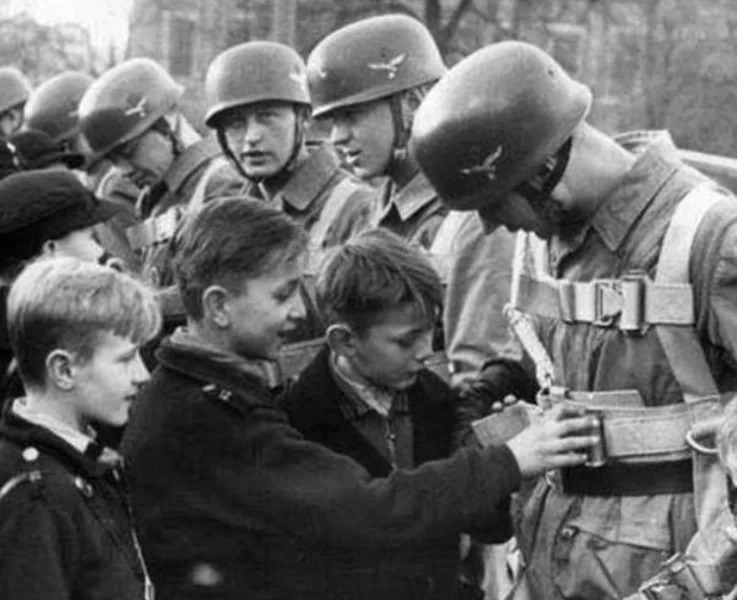
On November 21, 1941, a group of German children visited the German paratroopers in the Lustgarten on Berlin’s Museum Island. When the boys saw the sophisticated equipment, they couldn’t help but touch it.



